Entry rules for Mexico in 2021
There are no entry restrictions for travel to Mexico, however travelers presenting symptoms upon arrival at the airport should ask for the International Health Team (Sanidad Internacional).
- Upon arrival, all passengers must submit a questionnaire to immigration;
- If you have a flight booked, contact your airline for the latest information on flight restrictions, cancellations and what to expect before and during your flight;
- A four-stage plan towards the “new normal” is based on a traffic light system of red, orange, yellow and green;
- The land border between Mexico and the United States is closed for nonessential travel through at least March 21. However, air travel is allowed.
American travelers should remember they will need a negative Covid-19 test result taken 72 hours or less before travel to return to the US. The US Embassy says results for PCR and antigen tests are reliably available within 72 hours in Mexico.
Mexico City
- Where to stay: hotels in Mexico City.
- City music: Mirror Travel–Mexico
Noisy, modern, mysterious, crowded, sunny, boundless — there are so many epithets that I can immediately bestow on the country’s capital city. It’s best to start exploring from the center, where ancient Spanish architecture combines with modern Mexican murals. This mish-mash penetrates the entire city, as though the Maya population has united with the Conquistadores and pours right out into the street. Here for example on the corner of a building designed in Spanish baroque style the figure of Catrina – the most important character in the Day of the Dead – has been erected.
As ordered by the Sun God
Before the Conquistadores arrived, the ancient Aztec city of Tenochtitlan stood here. According to legend, it was the Sun God who pointed to the place for locating the capital, and he also taught the ancient people to build dams and hanging bridges that so surprised the Spaniards.
What to see
- Take a morning stroll through the historic center of Mexico City, visit the cathedral on the main square (entry is free), and then head to Torre Latinoamericana where you should climb up to the viewing platform ($5). On the 42nd floor you will get a panoramic view of the world’s largest Spanish-speaking metropolis!
- Make sure to take a look at the Bohemian district of Coyoacan — this is where Frida Kahlo lived in her colorful Casa Azul. She was one of the most striking artists of the 20th century. This house of feelings and suffering now hosts a museum with her personal belongings (entry is $13). Maybe you will manage to learn more about the life and art of this amazing woman.
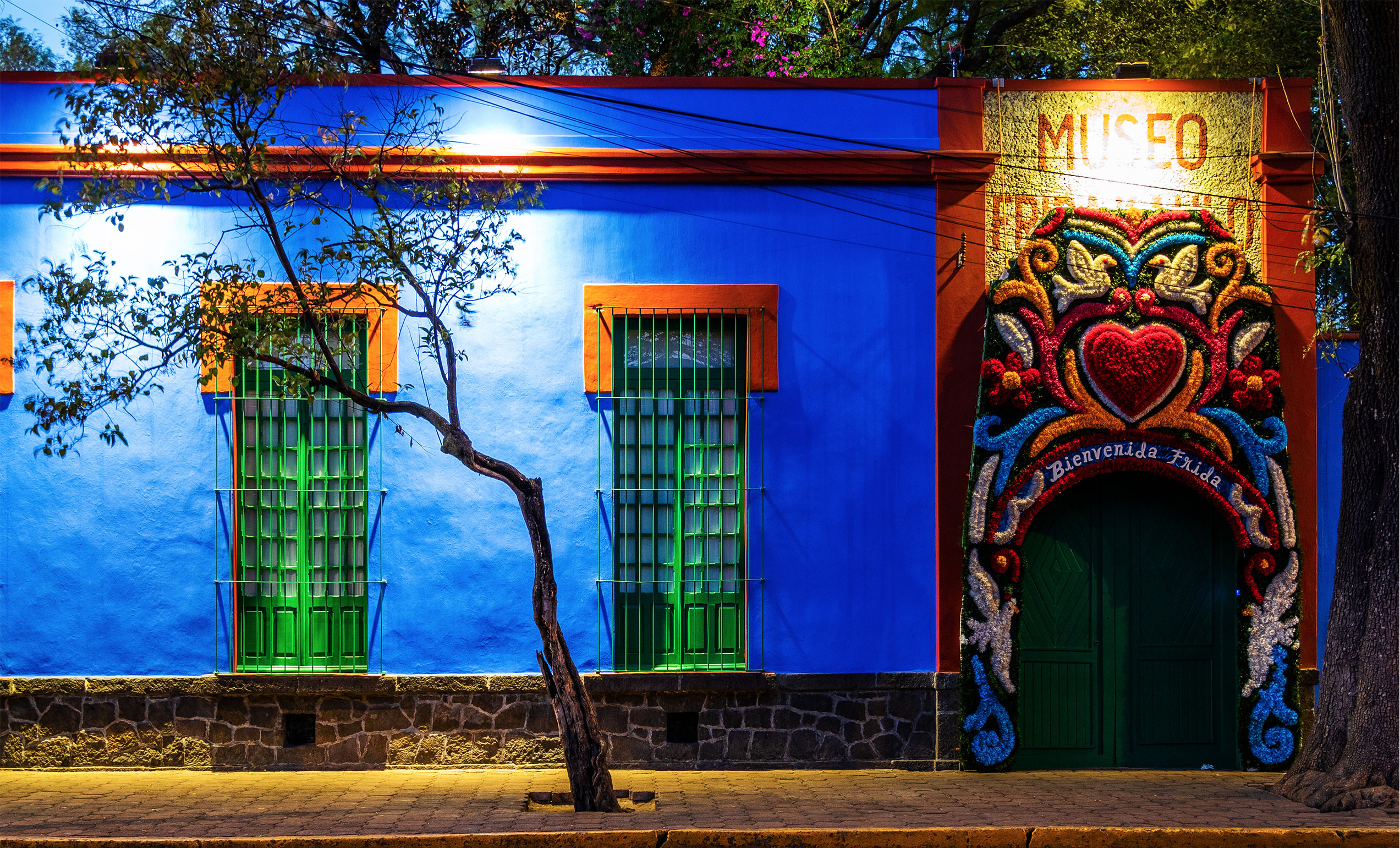
Frida Kahlo’s Azure Museum. Photo: R.M. Nunes / Shutterstock.com
- Don’t ignore Diego Rivera — Frida Kahlo’s husband: take a look in Museo Mural de Diego Rivera (a ticket costs $1.5) in Alameda Central Park. There you will see his famous frescos.
- End the day at Plaza Garibaldi. You can walk there on foot from the park, heading up Lazaro Cardenas street. The square is famous as a place where you can find the legendary mariachi orchestras! Oh, those sombreros and guitars, the striking voices and costumes — you might not resist and join in with the singing even without knowing the language.
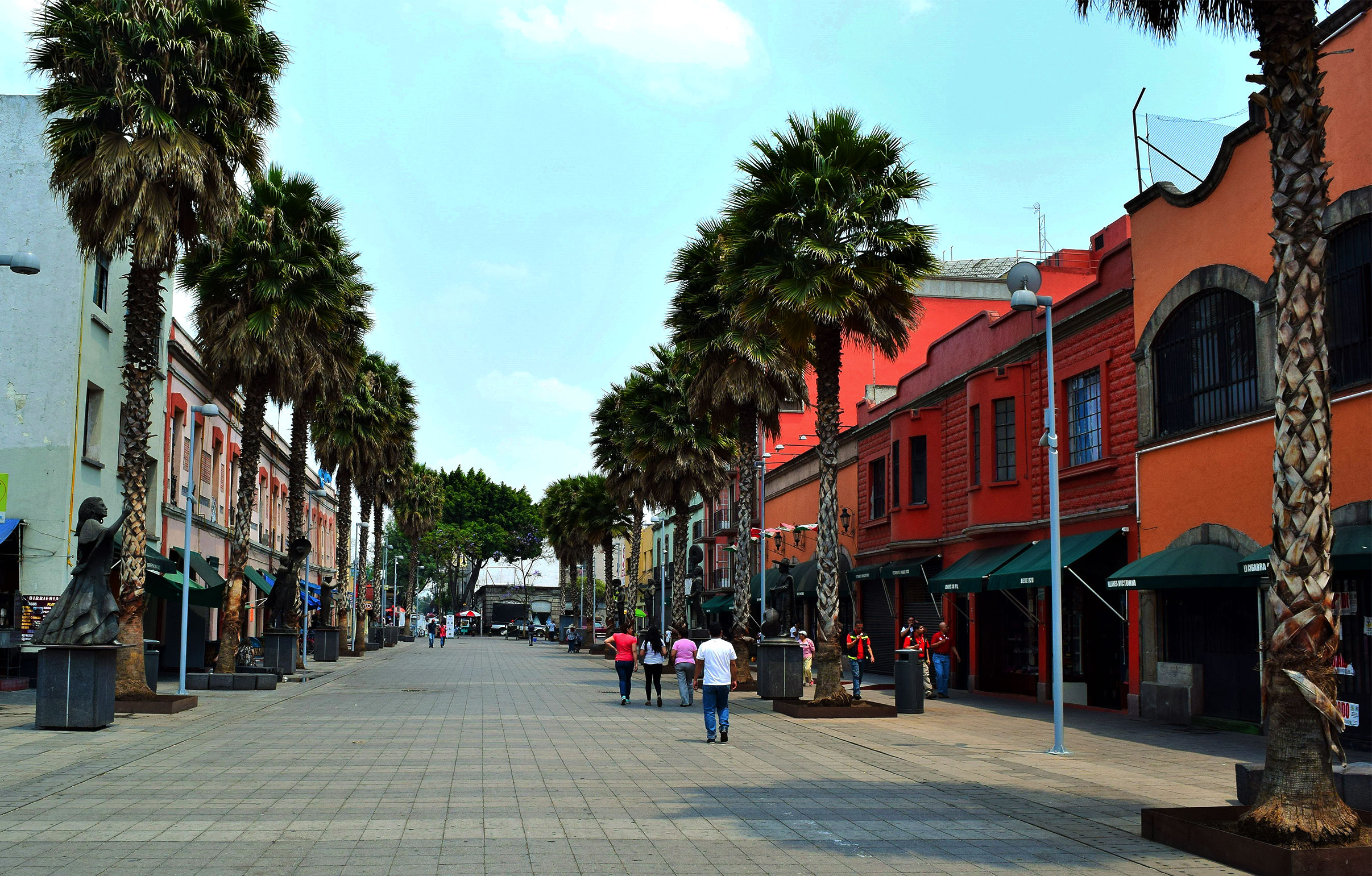
Come to Piazza Garibaldi to catch mariachi performances. Photo: tateyama / Shutterstock.com
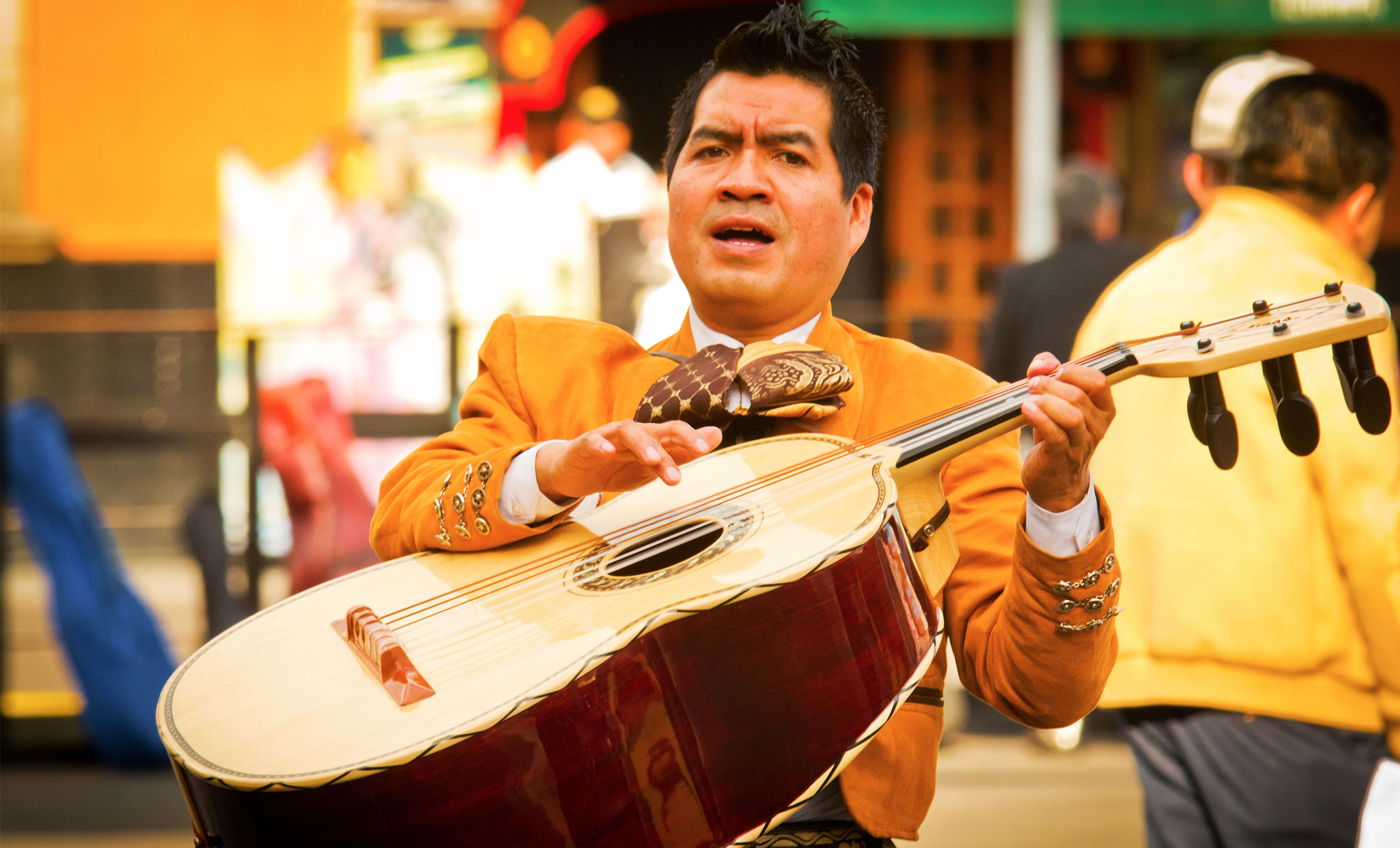
Photo: Belikova Oksana / Shutterstock.com
If you have some time left or even a spare day, head to the Island of the Dolls (La Isla de la Munecas). It’s a frightening place located 20 km from the center of Mexico City in Xochimilco Park. Here you will find scary installations composed of old dolls, each of which as though tells its mystical story. Consider it training for the Day of the Dead!
How to get there: you can get to the Island of the Dolls from the city center. First take the subway to Tasqueña (line 2), then change to the rapid tram Tren Ligero. Take it to Xōchimīlco station. From there you have to take a boat to the island, and make sure to tell the captain where you want to go. Entry is free.
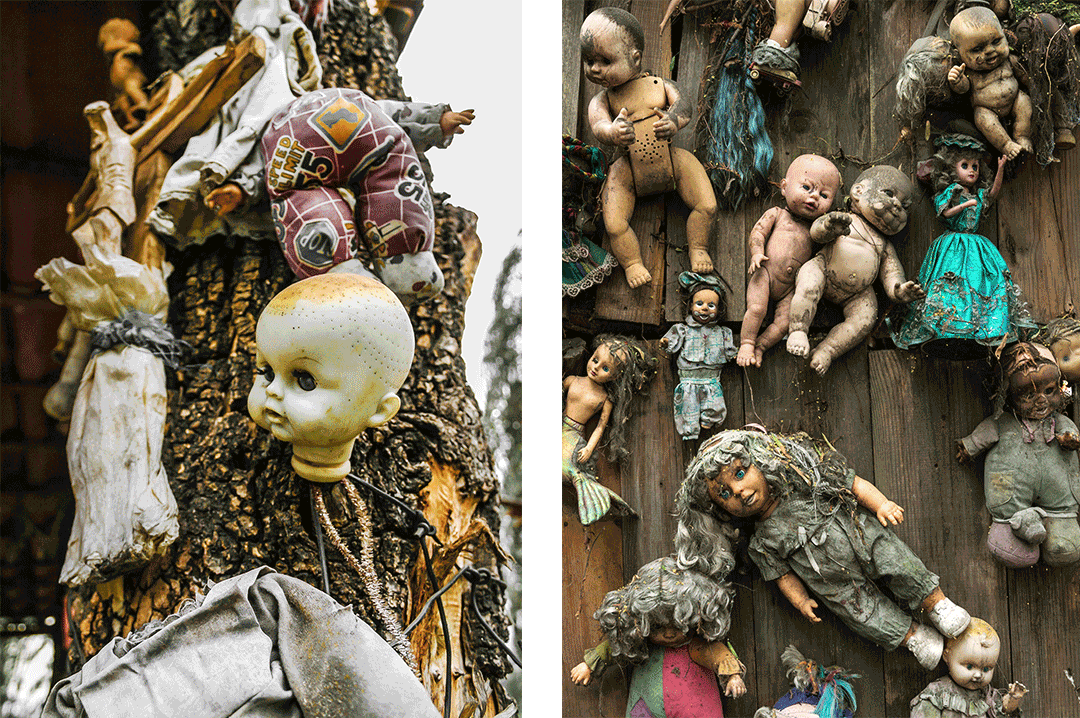
Spooky Island of the Dolls. Photo: Leon Rafael / Shutterstock.com
Guanajuato
- How to get there from Mexico City: from the northern bus station (Autobuses del Norte) on a Primera Plus bus to Guanajuato. The journey lasts around five hours. A ticket costs $24.
- Where to stay: hotels in Guanajuato.
- City music: Buena Vista Social Club–Chan Chan.
We head for the kaleidoscope city Guanajuato! It’s a patchwork blanket of colorful little houses spread over hilly territory, so being fit will help you on your walks. In fact, the city is sometimes called vertical due to its mounds, steps and deep tunnels between buildings.
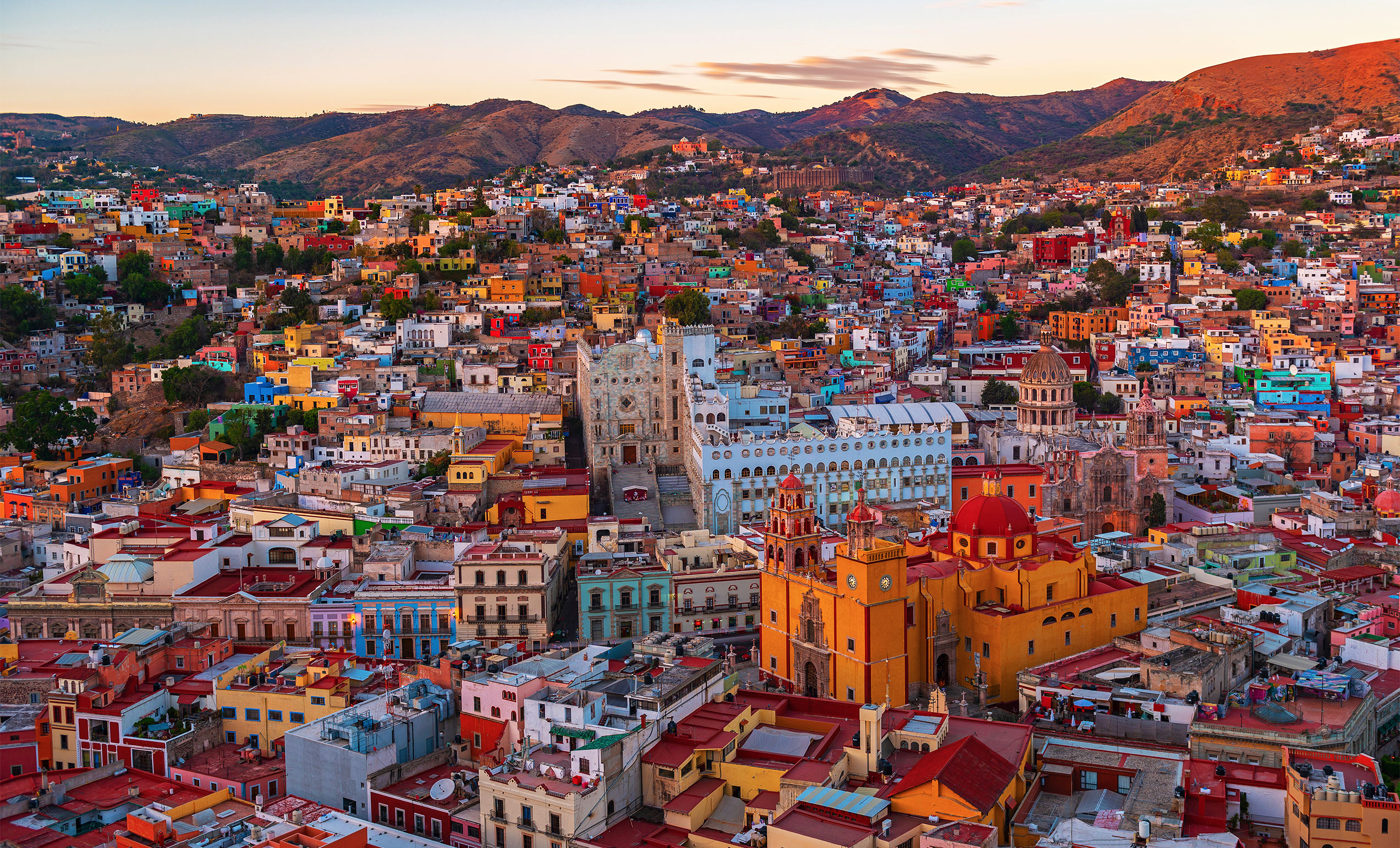
Guanajuato seemed to be painted with every possible color. Photo: SL-Photography / Shutterstock.com
The labyrinths of bright streets spin you in a dance, you take a million photos, there are a hundred thousand steps around you, and you wonder if you have been here already? That’s quite a brainteaser to solve!
If simply enjoying the walk through this town isn’t enough for you, then little Guanajuato will surprise you with its large number of tourist attractions involving art. Here even buses look unusual.
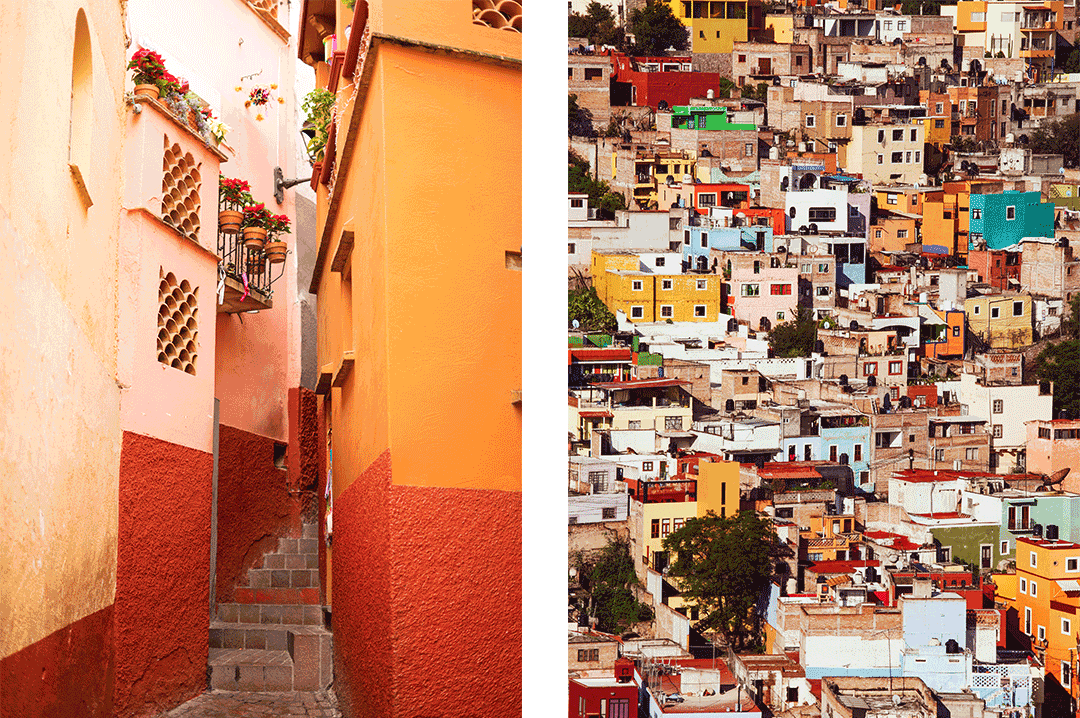
Vertical Guanajuato. Photo: Shutterstock.com
What to see
- The city hosts three historic theaters: Teatro Cervantes Guanajuato — here they adore Don Quixote and Sancho Panza, and they have even built a statue to them (tickets cost from $5), Teatro Juarez which also functions as a museum, but you also have the chance to visit a show there (tickets cost from $1.7), and Teatro Principal — a building with amazingly beautiful architecture (tickets cost from $4).
- Continuing with Don Quixote, pop into another interesting place — Museo Iconografico del Quijote (tickets cost from $1.5). It’s filled with portraits of the knight using diverse techniques. It’s an unusual sight, as though you have found yourself in an entire universe where thousands of different Don Quixotes exist, each of which has his own fate and view of the world. It’s amazing!
- And of course you mustn’t miss the main postcard-like view of Guanajuato — the sunny, dashing and daring Parroquia de Basílica Colegiata de Nuestra Señora de Guanajuato. The hardest thing is to pronounce it. Entry is free.
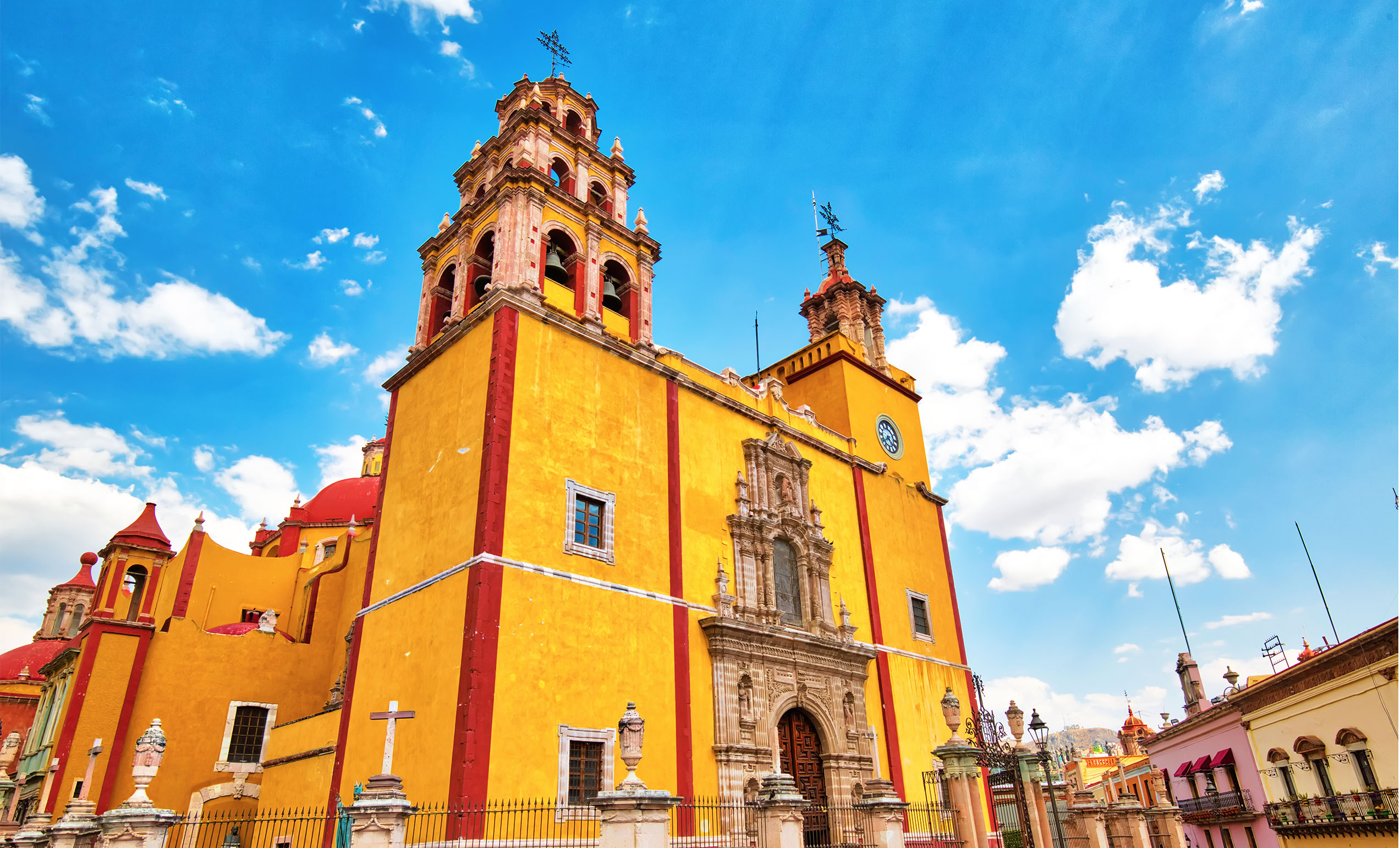
A basilica with a long name that you definitely won’t miss. Photo: eskystudio / Shutterstock.com
San Miguel de Allende
- How to get there from Mexico City: by direct bus from the northern bus station (Autobuses del Norte). A ticket costs around $13. The journey time is 4.5 hours.
- Where to stay: hotels in San Miguel de Allende.
- City music: Carlos Puebla–Y en Eso Llego Fidel.
The city is rightfully named the refuge of poets, writers, artists and other creative persons. There is something in the air, the silence, the narrow pebble streets, the cozy evening light that draws Mexico’s bohemians here.
This magic has even been caught by Hollywood film-makers, who filmed the legendary Once Upon a Time in Mexico here. Everything is arranged in a way so as to create magical film scenes!
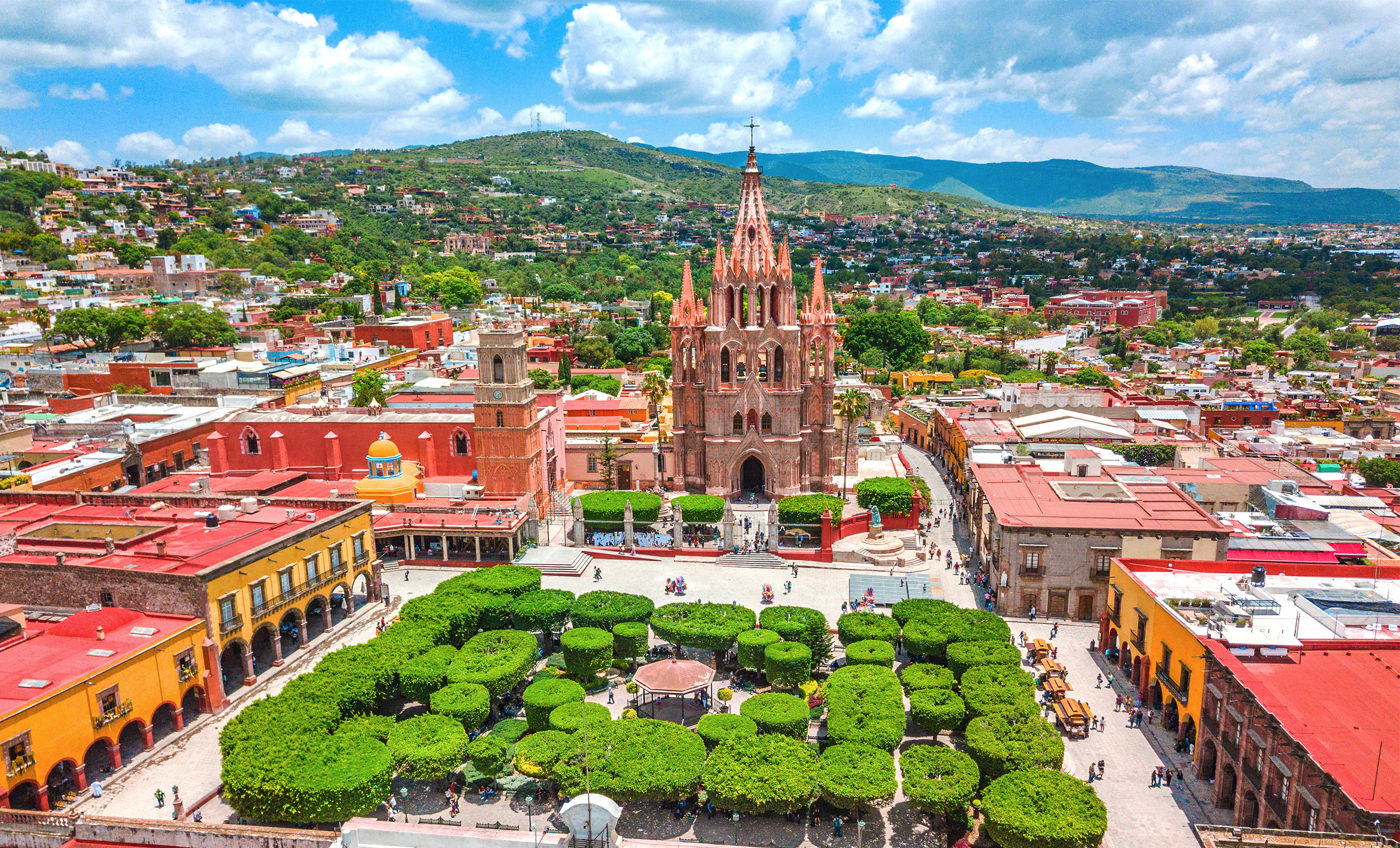
San Miguel de Allende. Photo: Rubi Rodriguez Martinez / Shutterstock.com
What to see
- Head to the El Mirador viewing platform, which given you a pretty view of the city and also shows the best sunsets.
- Take a walk along the romantic lane El Chorro, where the little houses literally drown in green garlands and flowers. While if you want to observe the real masters of flora then hurry to the Botanic Garden (Jardin Botanico El Charco del Ingenio, an entry ticket costs from $2). There you will see entire walls covered in huge cacti! Maybe it’s not so romantic, but definitely deserves to be filmed.
- The biggest ‘star’ of this town is Parroquia de San Miguel Arcangel (free entry). According to a city legend, this famous basilica was created by an architect who had never seen gothic churches in real life, only on postcards. And in fact what he came up with was from a fantasy world, which cannot be defined as belonging to any known art format.
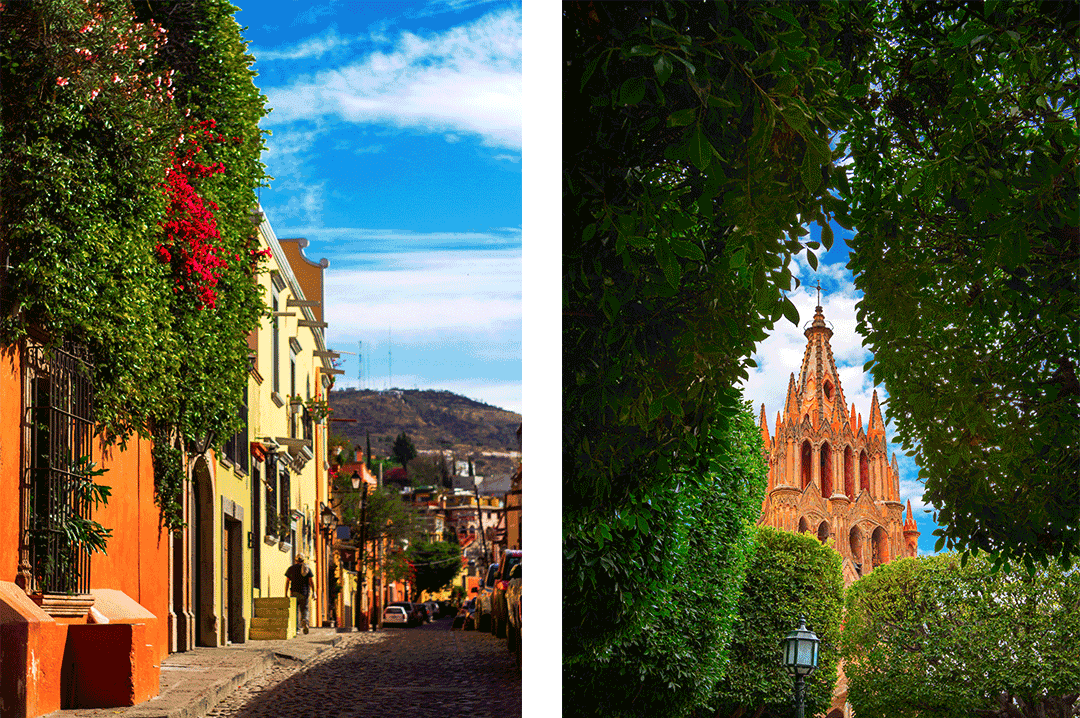
Green streets. Photo: Shutterstock.com
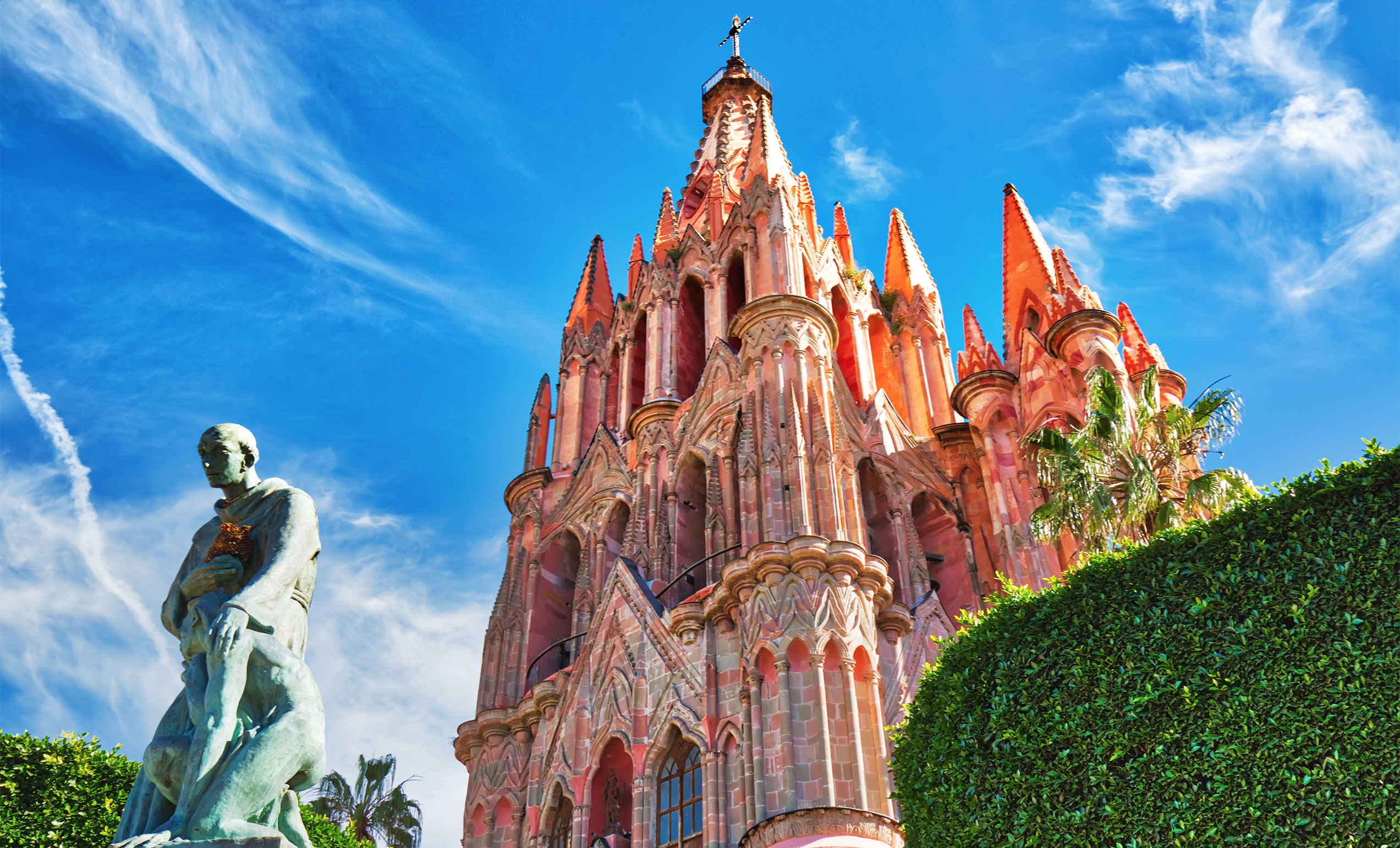
The visiting card of the city. Photo: eskystudio / Shutterstock.com
Puebla
- How to get there from Mexico City: buses reach Puebla from Mexico City’s eastern bus station TAPO (near San Lazaro subway station). Tickets cost from $7. The journey time is two hours.
- Where to stay: hotels in Puebla.
- City music: Mexico City–Sometimes I Wonder.
Often it’s the little details that make a city stand out, and that’s the case with Puebla. Since days long gone a special type of ceramics has flourished here — talavera, used in mind-blowing decorated tiles and much more as well: from plates to table tops. Obviously, its production has influenced the city’s architectural solutions. Many buildings are unique sites with their own particular decoration.
Amazingly, even the names of shops and bars are sometimes etched in tile on the building’s wall, as though they have been there for centuries!
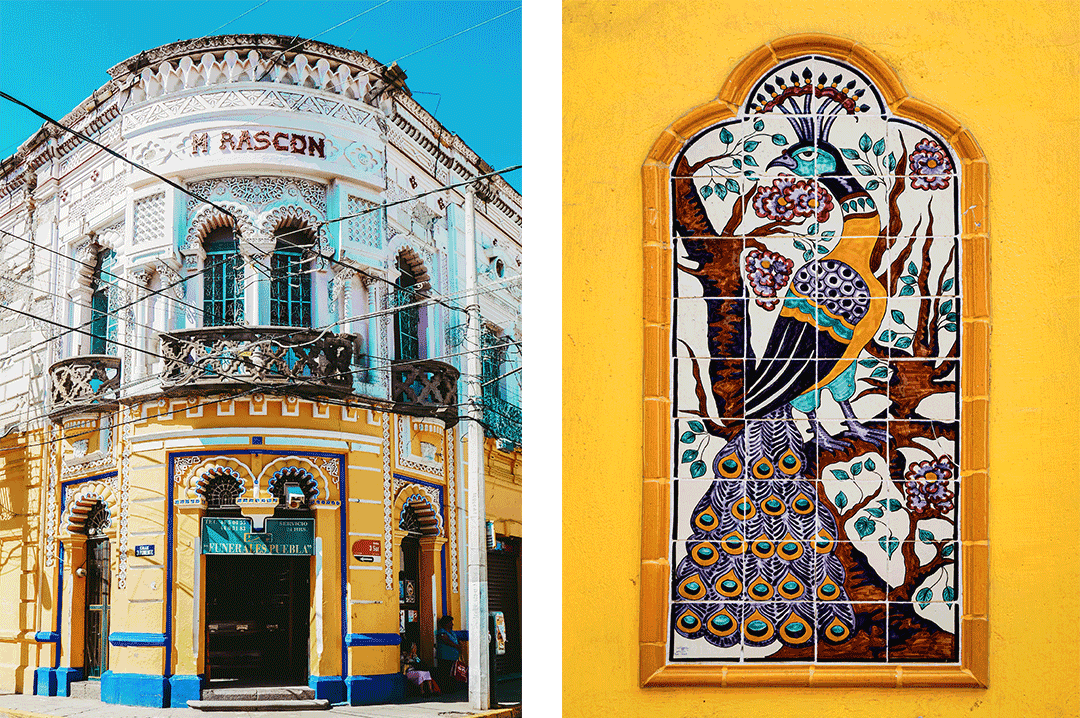
Mind-blowing painted tiles. Photo: Maritxu / Shutterstock.com
What to see
- The city’s unique appearance is created not only by talavera but also by ornate buildings such as Casa de Alfeñique, with wall carvings that you could admire forever.
- The huge Cathedral Santa Iglesia Basílica Catedral de Puebla looms over the main square. Its outside ornaments are quite modest, but the beauty inside is simply stunning. Entry is free.
- Fun for those with a sweet tooth — Puebla has its own confectionery street (Calle de los Dulces). Here the shops and stalls offer you sweets of all colors of the rainbow. Above all, don’t miss out on jamoncillo (which has nothing to do with Spanish jamon) — fudge made from sugar cane with added spices. Perhaps this is that same wonderful detail that makes you fall in love with the city?
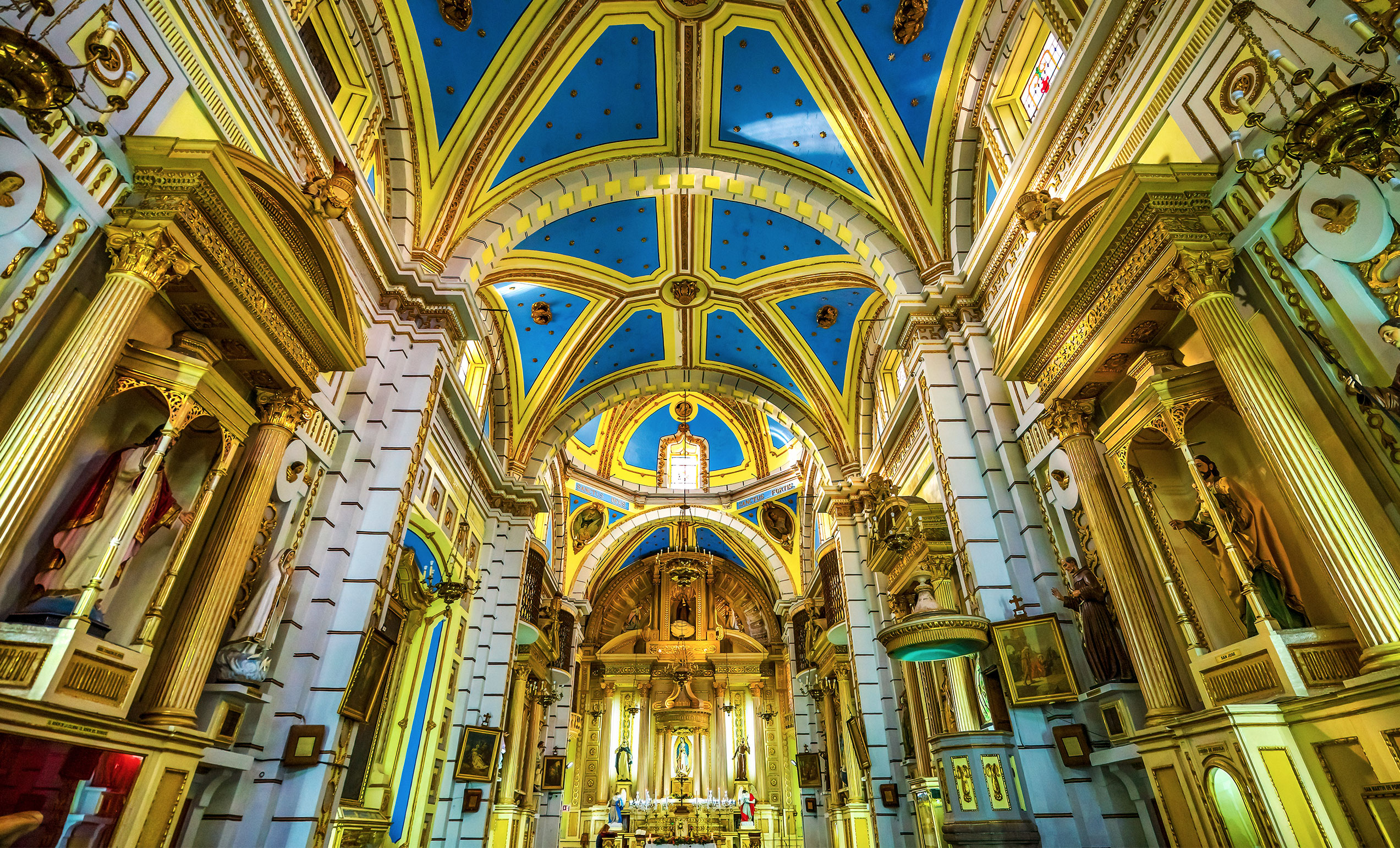
The rich interior of the city’s basilica. Photo: Bill Perry / Shutterstock.com
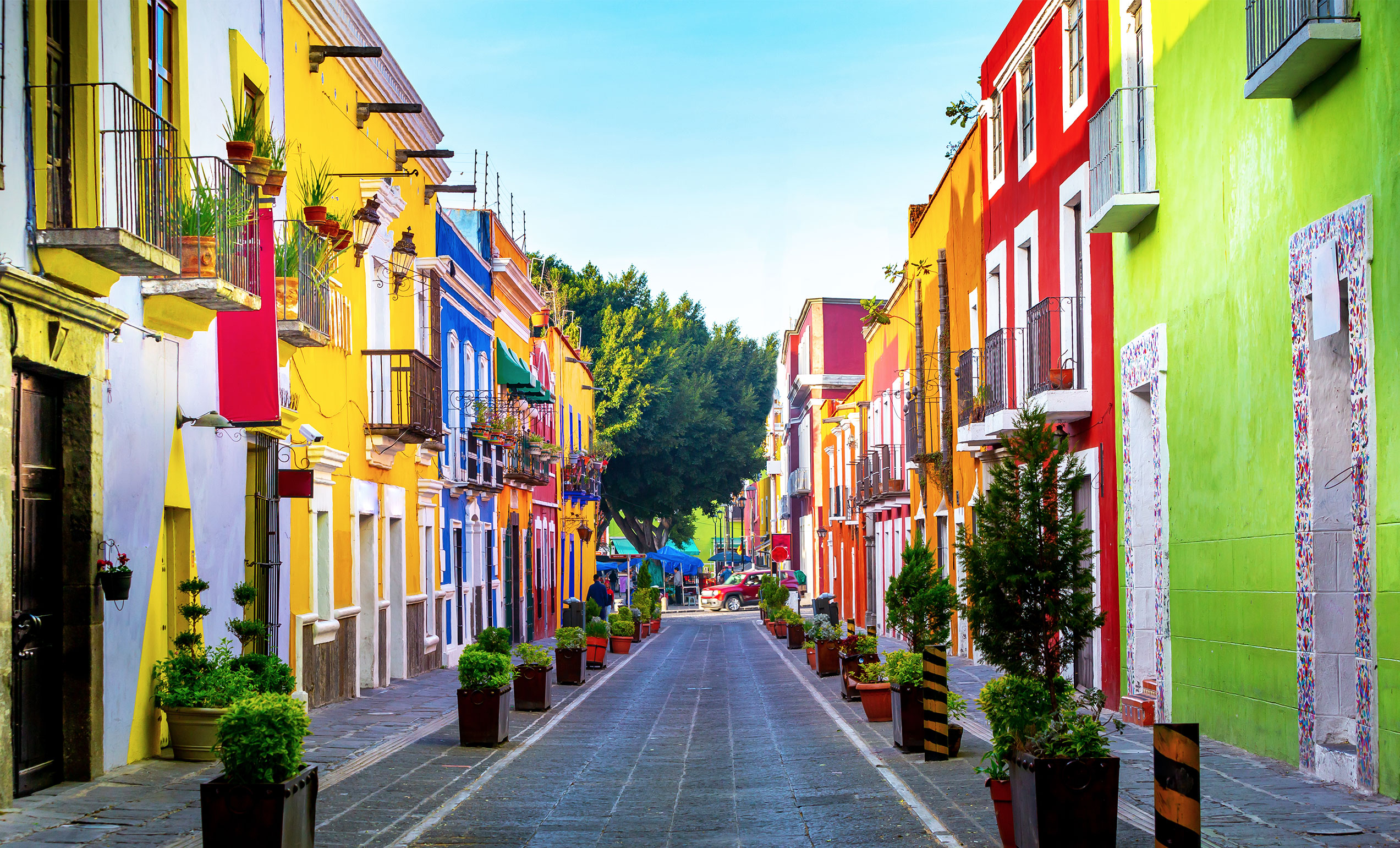
The vibrant streets of Puebla. Photo: GERARDO HUITRON / Shutterstock.com
Campeche
- How to get there from Mexico City: Campeche is located on the Yucatán Peninsula, so it’s easiest and quickest to get there from the capital by airplane. A ticket costs from $74. The flight takes an hour and a half.
- Where to stay: hotels in Campeche.
- City music: Sun–Canción del Mariachi (Morena de Mi Corazón).
Are you ready to visit a true pirate city? Has music from a universally adored film started to play in your head? Yes, we are in Campeche, on the coast of the Gulf of Mexico. This city was frequently a harbor or a target for real pirates. It has retained its rebel spirit and stone fortresses.
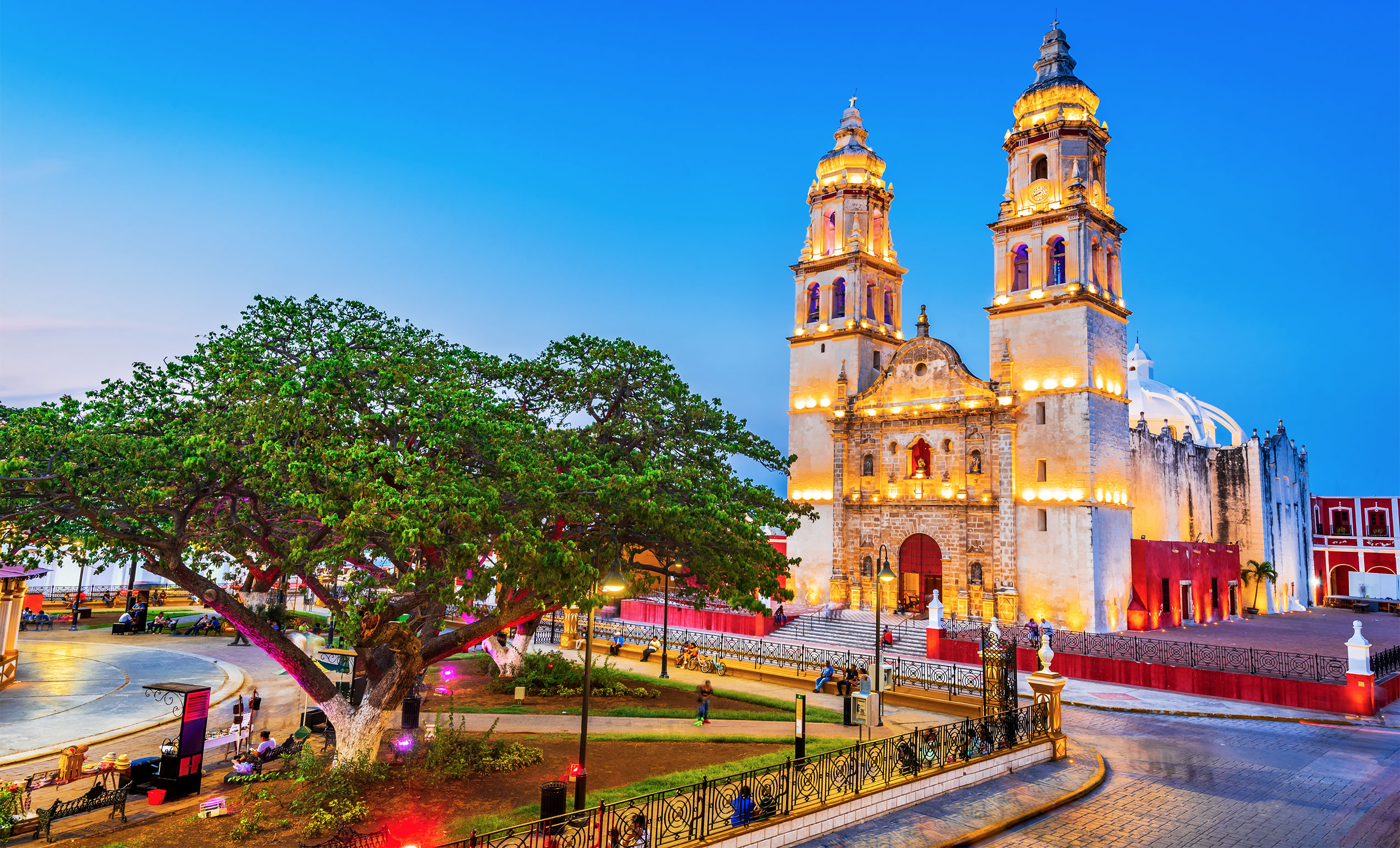
Cathedral on the main square. Photo: cge2010 / Shutterstock.com
What to see
- First, head to the old colonial city and view the magnificent Our Lady of the Immaculate Conception Cathedral on the main square, as the Gulf winds blow on it.
- Opposite, you will find the first harbinger of the city’s rebellious spirit — sculptures. You will come across them suddenly on various streets of the old city. It’s as though somebody decided to constantly remind the Campeche locals that they live somewhere special.
- The next stop is the unassailable citadel Puerta del Mar. Its walls preserve the memory of the city’s pirate past. The citadel also acts as a modest viewing platform from where you can see the parallel lines of the little streets and colored buildings. Entry is free.
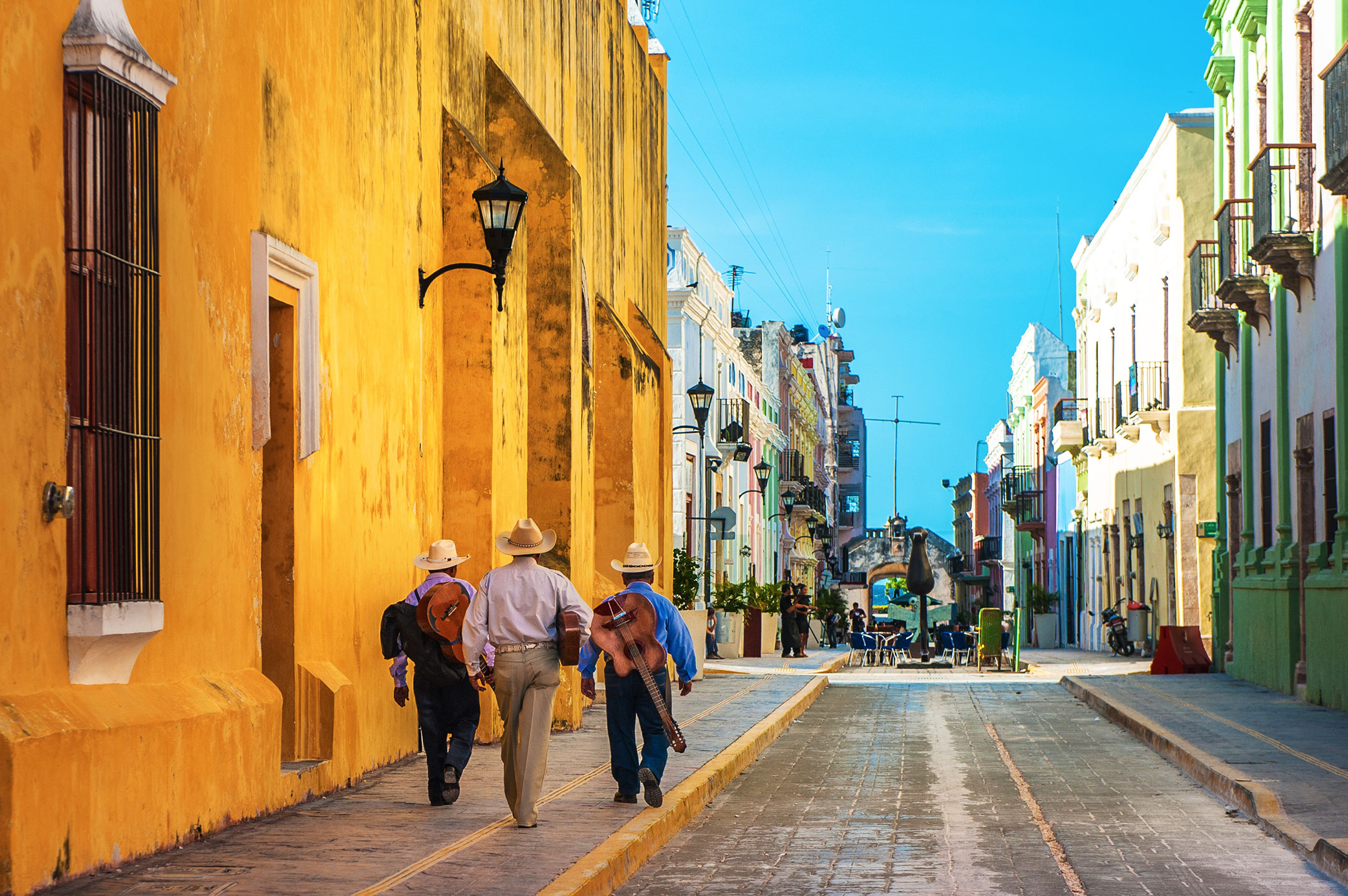
Hello Campeche! It seems that cities are competing in color.
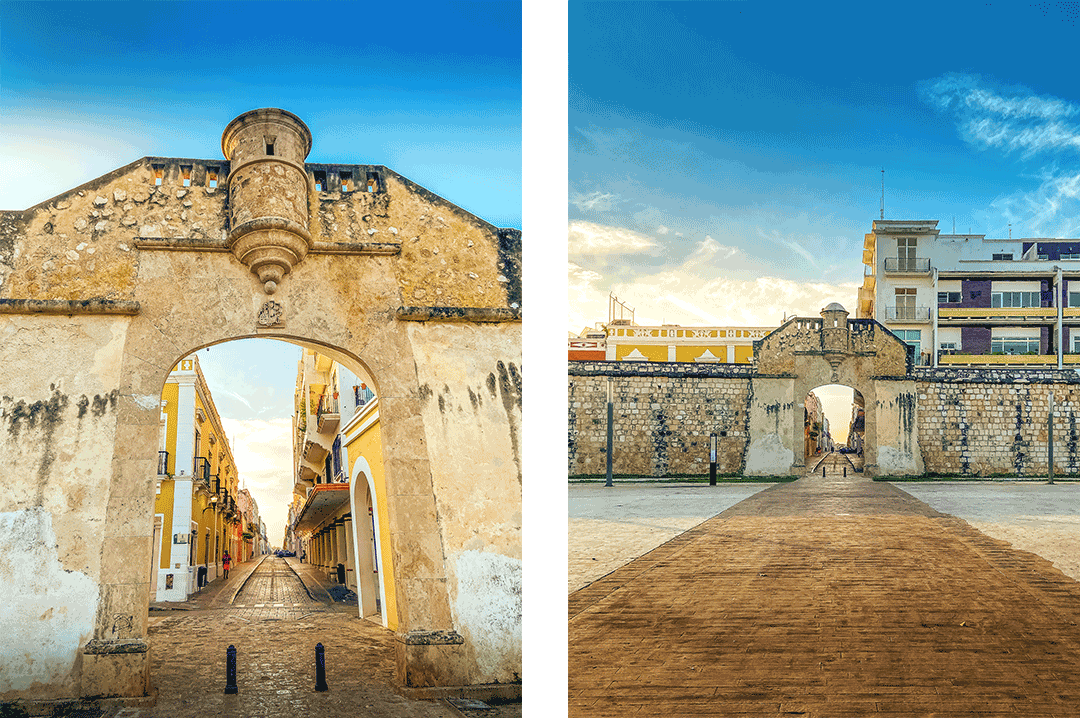
Puerta del Mar. Photo: Jessica Lopez Sanchez / Shutterstock
For me, Mexico resembles a huge patchwork blanket: heavy from the sheer number of amazing memories, endless in its expanse and audacity of thoughts. Great civilizations collapsed here, and new ones came to replace them; everything here is still steeped in mysteries and secrets. A country of adventure, a country of emotion, a country of life! Maybe I now realize why Frida Kahlo’s paintings are so poignant.






